Abstract
Coupled cyclic electron transport is assigned a role in the protection of leaves against photoinhibition in addition to its role in ATP synthesis. In leaves, as in reconstituted thylakoid systems, cyclic electron transport requires “poising,” i.e. availability of electrons at the reducing side of photosystem I (PSI) and the presence of some oxidized plastoquinone between photosystem II (PSII) and PSI. Under self-regulatory poising conditions that are established when carbon dioxide limits photosynthesis at high light intensities, and particularly when stomata are partially or fully closed as a result of water stress, coupled cyclic electron transport controls linear electron transport by helping to establish a proton gradient large enough to decrease PSII activity and electron flow to PSI. This brings electron donation by PSII, and electron consumption by available electron acceptors, into a balance in which PSI becomes more oxidized than it is during fast carbon assimilation. Avoidance of overreduction of the electron transport chain is a prerequisite for the efficient protection of the photosynthetic apparatus against photoinactivation.
Full text
PDF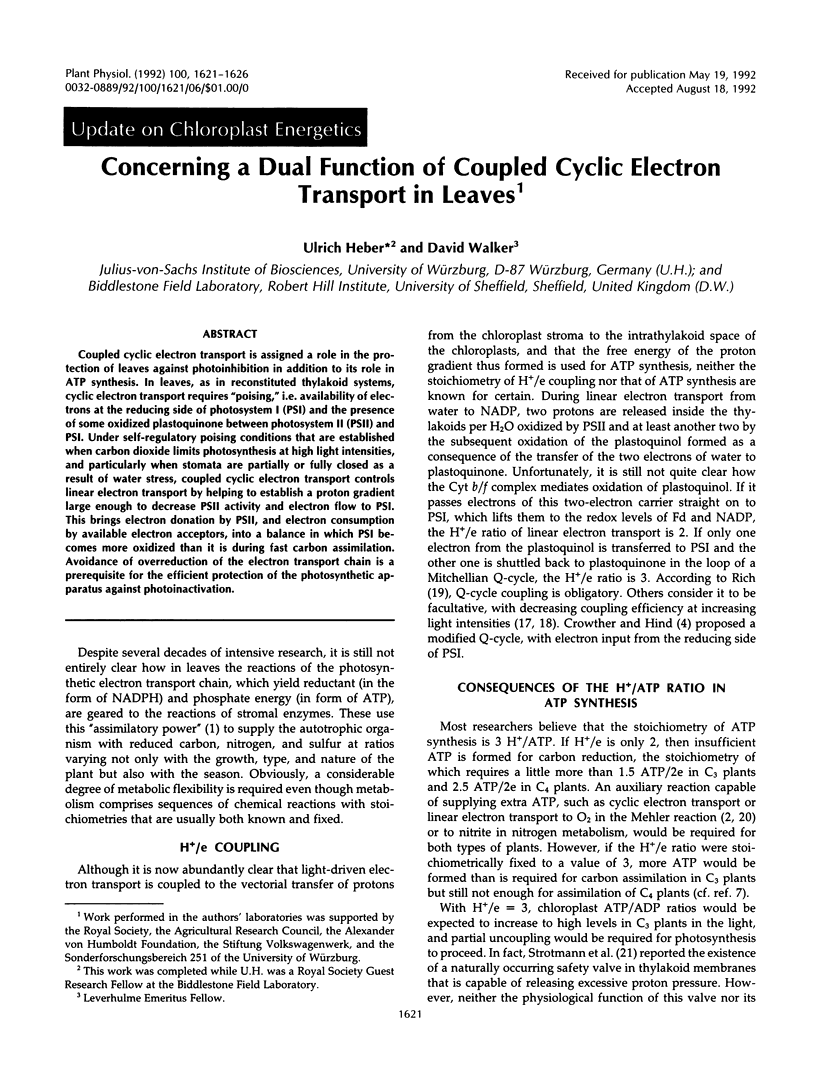
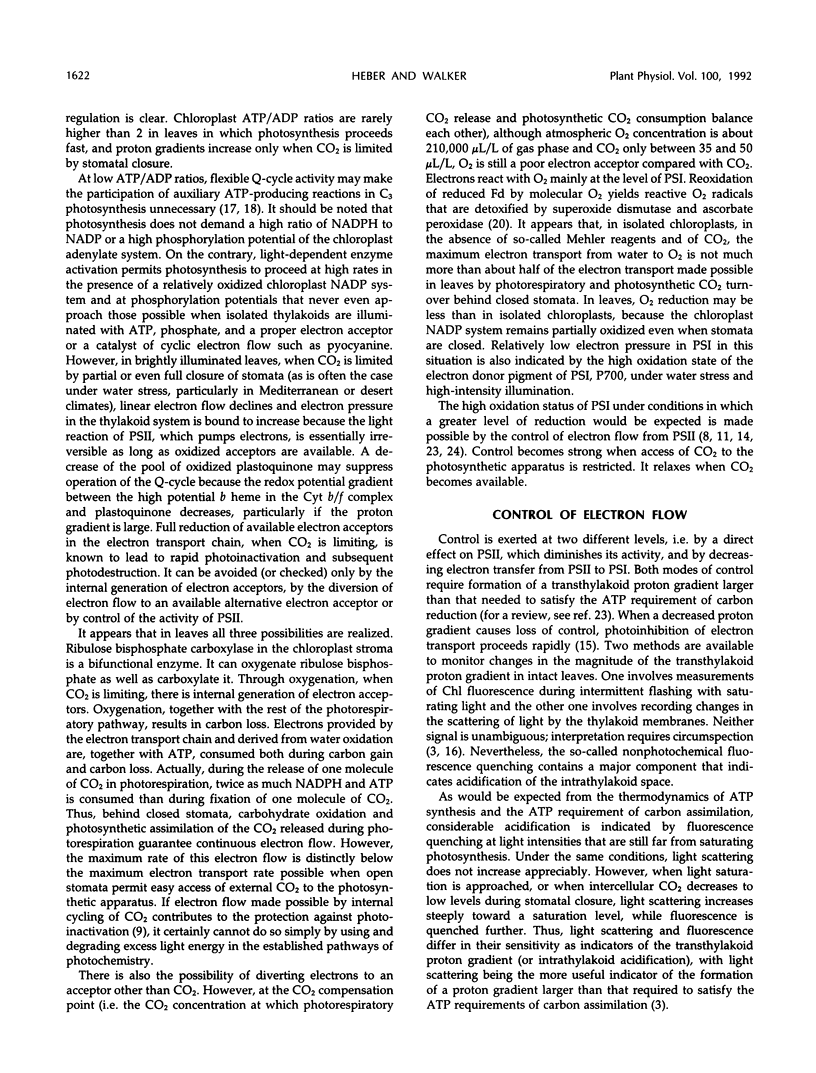
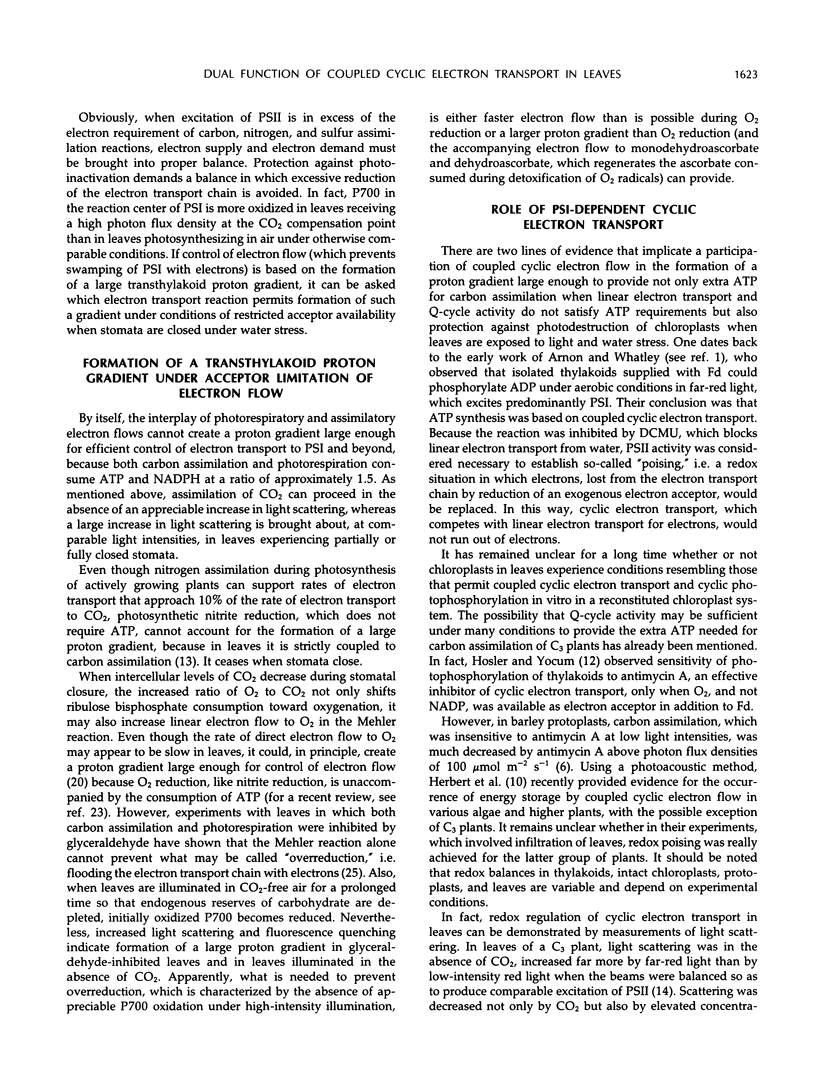
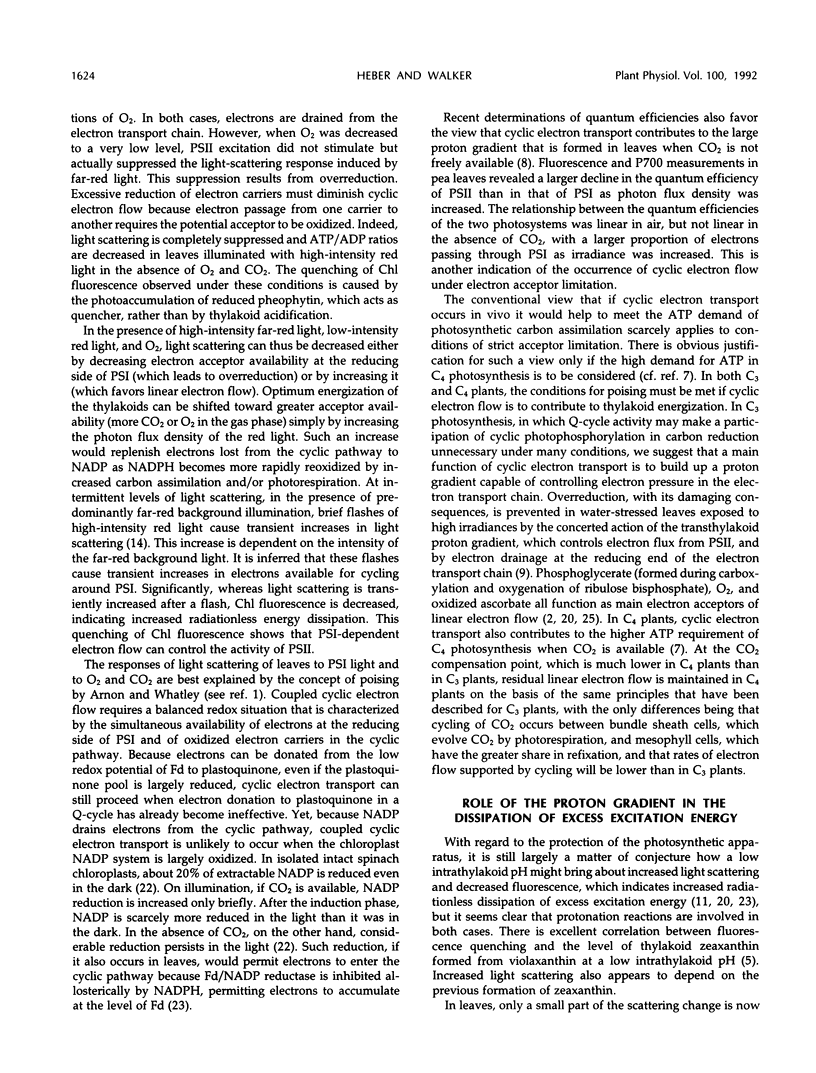

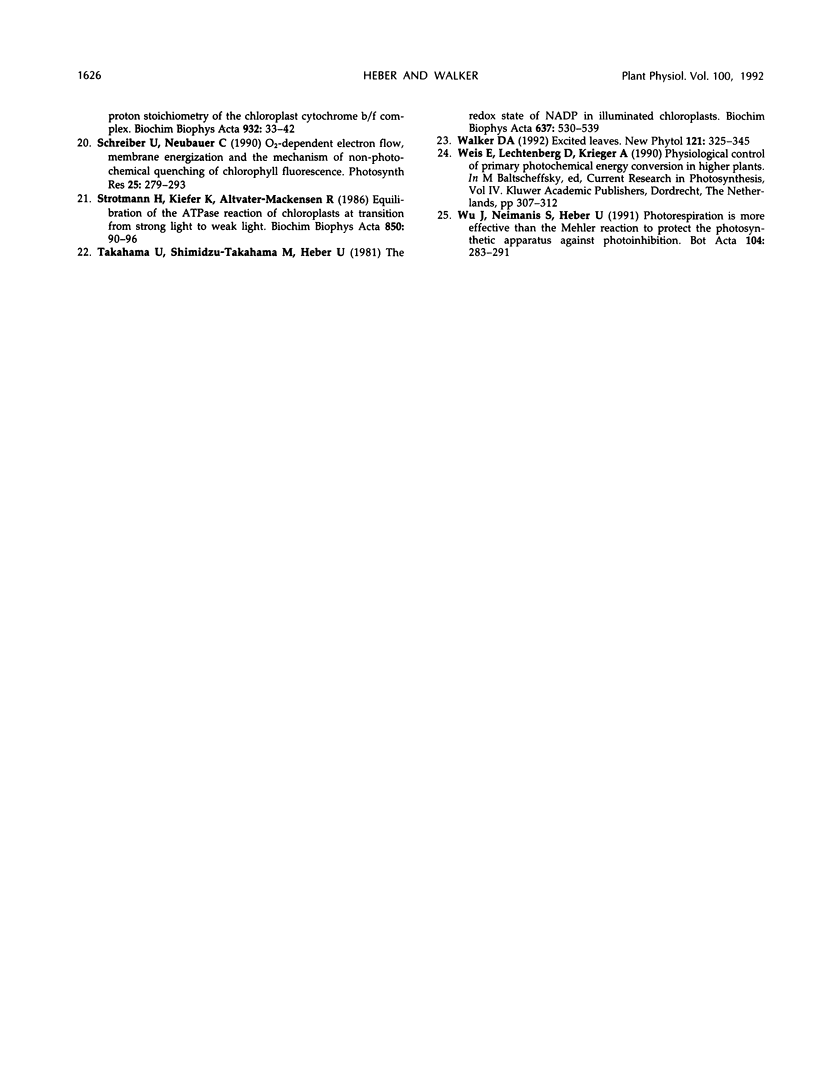
Selected References
These references are in PubMed. This may not be the complete list of references from this article.
- Bailey K. J., Walker D. A. Changes in fluorescence quenching brought about by feeding dithiothreitol to illuminated leaves. Plant Physiol. 1992 May;99(1):124–129. doi: 10.1104/pp.99.1.124. [DOI] [PMC free article] [PubMed] [Google Scholar]
- Crowther D., Hind G. Partial characterization of cyclic electron transport in intact chloroplasts. Arch Biochem Biophys. 1980 Oct 15;204(2):568–577. doi: 10.1016/0003-9861(80)90069-7. [DOI] [PubMed] [Google Scholar]
- Harbinson J., Foyer C. H. Relationships between the Efficiencies of Photosystems I and II and Stromal Redox State in CO(2)-Free Air : Evidence for Cyclic Electron Flow in Vivo. Plant Physiol. 1991 Sep;97(1):41–49. doi: 10.1104/pp.97.1.41. [DOI] [PMC free article] [PubMed] [Google Scholar]
- Herbert S. K., Fork D. C., Malkin S. Photoacoustic measurements in vivo of energy storage by cyclic electron flow in algae and higher plants. Plant Physiol. 1990 Nov;94(3):926–934. doi: 10.1104/pp.94.3.926. [DOI] [PMC free article] [PubMed] [Google Scholar]
- Horton P., Ruban A. V., Rees D., Pascal A. A., Noctor G., Young A. J. Control of the light-harvesting function of chloroplast membranes by aggregation of the LHCII chlorophyll-protein complex. FEBS Lett. 1991 Nov 4;292(1-2):1–4. doi: 10.1016/0014-5793(91)80819-o. [DOI] [PubMed] [Google Scholar]
- Kaiser W. M., Förster J. Low CO(2) Prevents Nitrate Reduction in Leaves. Plant Physiol. 1989 Nov;91(3):970–974. doi: 10.1104/pp.91.3.970. [DOI] [PMC free article] [PubMed] [Google Scholar]


